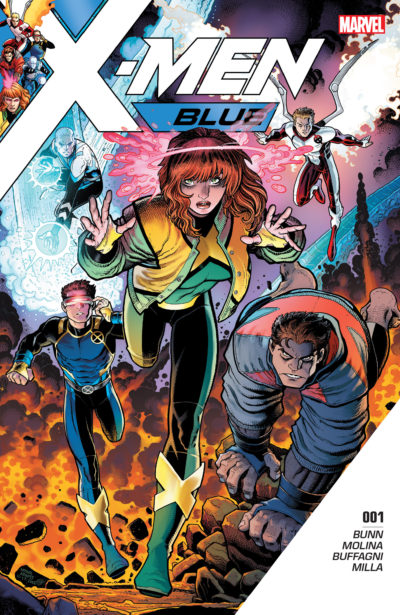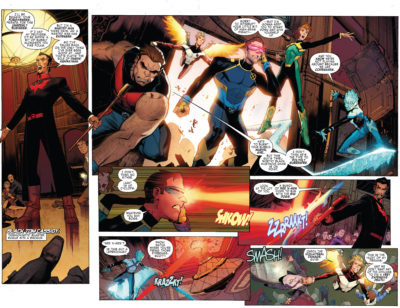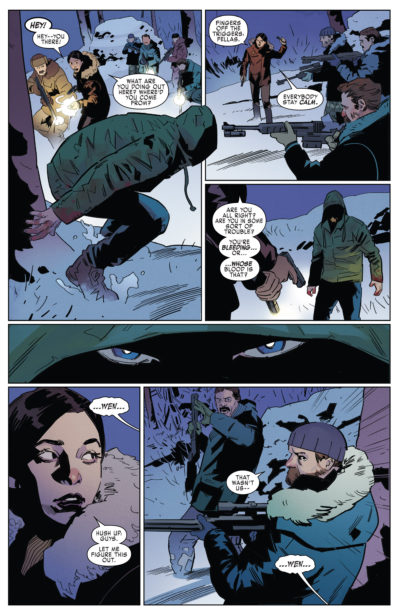Nostalgia is a tricky thing.
When we’re young, nostalgia allows us to unlock something secret and cool that we missed out on. I remember being so excited about flare-legged jeans and crazy-patterned polyester shirts in the mid-90s when the late 60s and early 70s were cool again.
They spoke to me because I felt like a kid out of time. I was more interested in actually picking out clothing than ever before. And, that hippy-influenced fashion let me into my own interpretation of glam rock tinged with goth, full of vinyl, flowy black shirts, and body glitter.
I’m not sure that anyone who lived through those fashions the first time was as eager as I was to see their return. Nostalgia is different when we’re older. Some elements might recall warm, fuzzy, pleasant feelings of youth, but we don’t get to pick and choose what our collective culture decides to recycle. Other throwbacks bombard us with the awful trends and noise we winced and tried to avoid back in the day.
For every transformative piece of nostalgia that is filled with a fresh inspiration, there are a hundred old things re-inflated like ancient hot-air balloons. These husks totter up into the the cultural horizon for a second flight, tattered and looming over our shoulders. They crowd out the sky for the young and old alike, strangling new ideas. Sometimes it feels like they even blot out the sun.
Nostalgia can be dangerous to the young and old alike. It can crowd the horizon of new art, of fresh fashion and music. And, if you’re not careful, it becomes a self-sustaining feedback loop, constantly comforting you with copies of copies of copies of something that once made you feel something – or, worse, something that made other people feel a feeling that you’re eager to capture for your own.
Nostalgia is a tricky, dangerous thing. If you’re not careful, it can suffocate you.
![]()
X-Men Blue (2017) #1
![]()
Written by Cullen Bunn with line art by Jorge Molina (A-story) and Matteo Buffagni (B-story) with color art by Matt Milla and lettering by VC’s Joe Caramagna. Primary cover by Arthur Adams and Peter Steigerwald.
CK Says: Skip it!
![]()
X-Men Blue #1 is part of Marvel’s relaunch of its full line of mutant books, but this one is not like the others. Rather than inject new life into a battered franchise, it seeks to hook readers through nostalgia for a group of tired characters that weren’t even that great the first time around.
(And, that’s before we get to the crushingly stupid back-up story.)
On the surface, X-Men Blue is a zippy, one-shot “high adventure on the high seas” story with a recognizable team of the five original X-Men tackling some familiar foes. That surface level is going to play out fine for a lot of readers. It will push some nostalgia buttons for some and “access to nostalgia” buttons for others.
Both sets of readers might be forgetting that these original mutants have never been the most interesting team. What was so special about them back in the 1960s (and in many flashbacks to the period) was using these every-teen archetypes to uncover a world filled with vivid villains paired with disarmingly plain everyday discrimination.
Why invite them to the present day, aside from nostalgia? It was the handiwork of Beast in 2013 to try to show Cyclops how far he had strayed from when they were as wide-eyed teens. That’s a great idea for a single story, but editorially no one seems sure why the characters are still around other than the fact that a few thousand people keep buying their book.
Author Cullen Bunn has little to say on the topic in this first issue. He’s been his best at Marvel writing Magneto for the past few years, but X-Men Blue doesn’t yet have the morally gray allure of those stories (though, it would be a brilliant way to re-contextualize these characters).
 Bunn uses banter to tell us about a number of elements that might make the team seem a little more distinct than they have in the past. Jean is the leader (why?), Angel has fire wings (what?), Beast does magic (how?), Cyclops misses barber shops (huh?), and Iceman… looks at his phone a lot (because he is now gay and gay equals having a social life and/or finding hook-ups, apparently).
Bunn uses banter to tell us about a number of elements that might make the team seem a little more distinct than they have in the past. Jean is the leader (why?), Angel has fire wings (what?), Beast does magic (how?), Cyclops misses barber shops (huh?), and Iceman… looks at his phone a lot (because he is now gay and gay equals having a social life and/or finding hook-ups, apparently).
The conflict is similarly vague. The issue makes fodder of Black Tom Cassidy, who’s been underused for years. He draws power from and manipulates plant life, so of course he’s robbing a boat in the middle of the ocean along with his customary multiple-ton accomplice, Juggernaut.
This team never met either of the villains in their original continuity. They just yell, “Hey, I read some files about you!” and make quick work of them both in an uninteresting and badly-choreographed battle.
None of those details matter. We’re at sea because we’re at sea. The team is together because they’re together, heroes because they’re heroes … except really they’re acting on the orders of someone they have no reason to trust, which will hopefully lead us back to Bunn’s strength as a writer.
Black Tom’s redesign makes him look exactly like Dr. Strange, although artist Jorge Molina’s Juggernaut look fantastic in a new red-and-silver armor look. Molina’s four teen boy X-Men are distinct in both face and body types. He’s a little less successful with Jean Grey, whose look is mutable and often dominated by a clumsily rendered nose. Molina’s art is strengthened by Matt Milla’s colors, which manage to be full of vivid color without ever getting too shiny or glossy.
Then there’s the back-up feature, also by Bunn.
It looks gorgeous. Matteo Buffagni knocks the somber, silent, snowy landscape of a small Canadian town out of the park and I was shocked to see it was also colored by Milla!
It’s a story we’ve seen before – town hunts monster that’s killing local animals, thinks monster is a person, but actually the monster is a monster.
That’s all well and good. It’s the person-monster that’s the problem. It’s Wolverine’s son, James Hudson – possibly from the Ultimate Universe, the Marvel spinoff finally put to rest at the end of Secret Wars (but not before importing Ultimate Spider-Man, Miles Morales).
For those keeping track, our current reality now includes a dead Wolverine, an alternate future old Wolverine called Old Man Logan, a son of Wolverine turned anti-hero named Daken, a clone slash daughter of Wolverine called X-23, an alternate future son of Wolverine and Mystique named Raze, and another son of Wolverine – possibly from another alternate dimension.
And I might’ve missed a few.
This back-up feature – and, in fact, this entire comic – is everything is what is wrong with the X-Men franchise.
The writers and editorial team have become convinced that X-Men are about nostalgia, in-fighting, and dimensional travel. Really, they’ve always been about breaking new ground and human relationships. Their classic dimensional travel stories are actually rooted in hatred and fear – not just fear of a world that hates you, but fear of what you might become.
Cullen Bunn has the chance here to reground these typically archetypal teens by blurring lines of right and wrong, but we get barely a hint of it here. A page of story previews hints at two sets of cross-dimensional characters, and two sets of characters back from the dead – not exactly a lot of inspiration for the book to carve out its own distinct place in the X-Men hierarchy or to reject the franchise’s recent narrative failures.
I hope Bunn has something better than that in store, but between the story previews and the insertion of yet another Wolverine analog, the future looks grim for our young mutants.
Missed the other X-Men relaunch books? Check out my reviews of X-Men Prime and X-Men Gold #1, plus learn how to read and collect every issue of every X-Men title, ever.